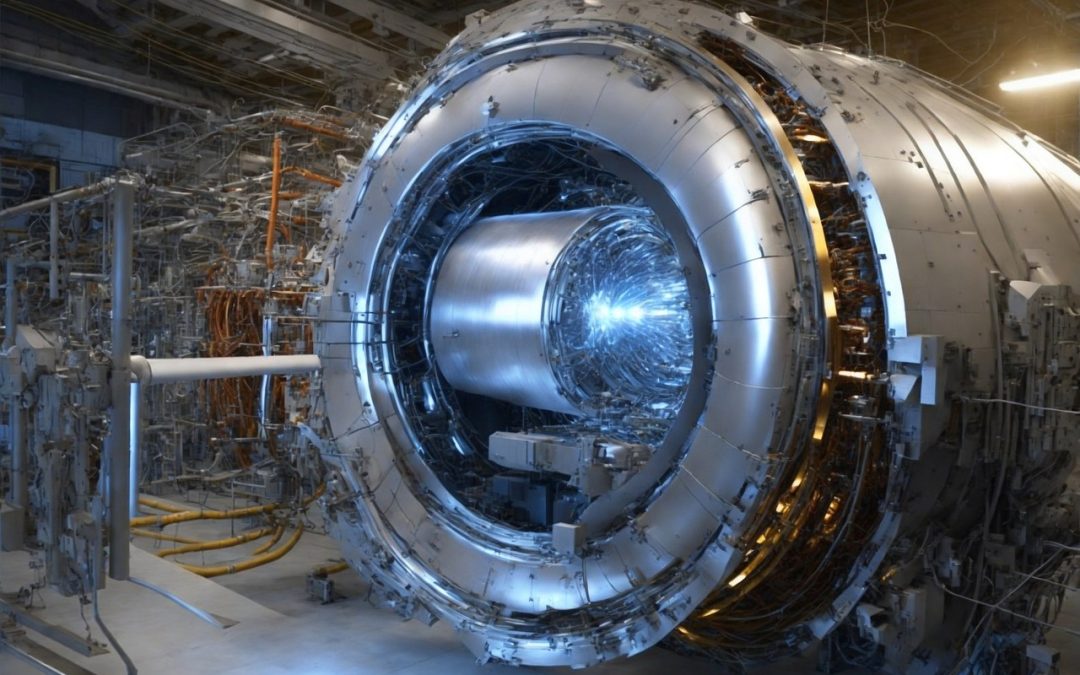
by jsendak | Jan 14, 2024 | GR & QC Articles
The behaviour of a chaotic system and its effect on existing quantum
correlation has been holographically studied in presence of non-conformality.
Keeping in mind the gauge/gravity duality framework, the non-conformality in
the dual field theory has been introduced by considering a Liouville type
dilaton potential for the gravitational theory. The resulting black brane
solution is associated with a parameter $eta$ which represents the deviation
from conformality. The parameters of chaos, namely, the Lyapunov exponent and
butterfly velocity are computed by following the well-known shock wave
analysis. The obtained results reveal that presence of non-conformality leads
to suppression of the chaotic nature of a system. Further, for a particular
value of the nonconformal parameter $eta$, the system achieves Lyapunov
stability resulting from the vanishing of both Lyapunov exponent and butterfly
velocity. Interestingly, this particular value of $eta$ matches with the
previously given upper bound of $eta$. The effects of chaos and
non-conformality on the existing correlation of a thermofield doublet state
have been quantified by holographically computing the two-sided mutual
information in both the presence and absence of the shock wave. Furthermore,
the entanglement velocity is also computed and the effect of non-conformality
on it have been observed. Finally, the obtained results of Lyapunov exponent
and butterfly velocity have also been verified from the pole-skipping analysis.
Future Roadmap: Challenges and Opportunities
Based on the conclusions of the study, there are several potential challenges and opportunities that lie ahead.
1. Exploring the Suppression of Chaos with Non-Conformality
The findings suggest that the presence of non-conformality in a chaotic system leads to its suppression. Further research could focus on understanding the underlying mechanisms behind this phenomenon and investigating its implications in other systems. Challenges in this area may involve developing more precise mathematical models and conducting experimental validations.
2. Investigating Lyapunov Stability in Nonconformal Systems
The study reveals that a particular value of the nonconformal parameter $eta$ can lead to Lyapunov stability, where both the Lyapunov exponent and butterfly velocity vanish. Future research can delve deeper into the characterization and significance of this stability. It would be crucial to determine whether this stability also arises in other nonconformal systems and explore how it relates to existing stability criteria. Challenges in this area may include developing analytical tools for quantifying stability and performing extensive numerical calculations.
3. Quantifying the Effects of Chaos and Non-Conformality on Correlation
The research highlights the importance of studying the effects of chaos and non-conformality on existing correlations within thermofield doublet states. Further investigations could focus on quantifying these effects through advanced computational techniques and theoretical frameworks. Challenges may arise in accurately modeling and capturing the dynamics of correlations in complex systems.
4. Understanding the Role of Non-Conformality in Entanglement Velocity
The study also observes the effect of non-conformality on entanglement velocity. Future research can explore how non-conformality influences entanglement dynamics and its implications for quantum information processing. Challenges in this area may involve the development of new theoretical frameworks that can capture the complexity of entanglement velocity in non-conformal systems.
5. Verifying Results through Pole-Skipping Analysis
The obtained results of the Lyapunov exponent and butterfly velocity can be further validated using pole-skipping analysis. It would be valuable to conduct additional studies to confirm the consistency of these results and investigate their generalizability to other physical systems. Challenges may involve devising innovative techniques for analyzing and interpreting the pole-skipping behavior.
In conclusion, the findings presented in this study open up several avenues for future research in understanding the behavior of chaotic systems in the presence of non-conformality. Addressing the challenges and harnessing the opportunities outlined above will contribute to advancing our knowledge in this field and potentially uncovering new applications for quantum correlation and information processing.
Read the original article

by jsendak | Jan 9, 2024 | GR & QC Articles
Recent proposals are emerging for the experimental detection of entanglement
mediated by classical gravity, carrying significant theoretical and
observational implications. In fact, the detection of gravitational waves (GWs)
in LIGO provides an alternative laboratory for testing various gravity-related
properties. By employing LIGO’s arms as oscillators interacting with
gravitational waves (GWs), our study demonstrates the potential for generating
quantum entanglement between two mutually orthogonal modes of simple harmonic
oscillators. Our findings reveal unique entanglement dynamics, including
periodic “collapse and revival” influenced by GW oscillations, alongside a
distinct “quantum memory effect.” We believe that these forecasts may hold
significance for both theoretically probing and experimentally verifying the
quantumness of gravitational waves.
Experimental Detection of Entanglement Mediated by Classical Gravity: Roadmap for the Future
Recent proposals have surfaced discussing the experimental detection of entanglement mediated by classical gravity, which could have significant theoretical and observational implications. The detection of gravitational waves (GWs) in the Laser Interferometer Gravitational-Wave Observatory (LIGO) provides a unique laboratory for testing various gravity-related properties. By utilizing LIGO’s arms as oscillators interacting with GWs, a recent study has showcased the potential for generating quantum entanglement between two mutually orthogonal modes of simple harmonic oscillators. These findings shed light on distinctive entanglement dynamics influenced by GW oscillations, including periodic “collapse and revival” and a notable “quantum memory effect.”
Future Roadmap and Opportunities
Moving forward, there are several key aspects to consider regarding the future roadmap for readers interested in this field.
- Theoretical Probing: The proposed experimental detection of entanglement mediated by classical gravity opens up exciting possibilities for further theoretical exploration. Researchers can delve into understanding the intricate mechanisms behind the observed entanglement dynamics, such as the factors contributing to the periodic collapse and revival phenomenon. Theoretical investigations can also focus on expanding the scope of these experiments to explore more complex systems and higher-order entanglement.
- Experimental Verification: The study’s findings present a remarkable opportunity for experimental verification of the quantum nature of gravitational waves. Researchers can strive to reproduce and validate the observed entanglement dynamics in controlled laboratory settings, corroborating the predictions made based on the interaction between LIGO’s arms and GWs. This experimental verification would strengthen our understanding of both quantum entanglement and classical gravity.
- Technological Challenges: The pursuit of experimental detection and verification of entanglement mediated by classical gravity is not without its challenges. Developing the necessary technology to precisely manipulate and control the interaction between GWs and oscillators is a crucial step. Researchers must work towards enhancing the sensitivity and precision of detectors like LIGO to effectively capture and analyze the entanglement dynamics. Additionally, addressing potential noise sources and environmental disturbances is crucial to ensure accurate experimental results.
- Implications for Fundamental Physics: The successful detection and verification of entanglement mediated by classical gravity would have far-reaching implications for fundamental physics. Confirming the quantum nature of gravitational waves could deepen our understanding of gravity as a quantum interaction. It might also provide insights into the nature of entanglement itself and its connection to gravity, leading to breakthroughs in quantum gravity theories and potentially bridging the gap between quantum mechanics and general relativity.
In conclusion, the experimental detection of entanglement mediated by classical gravity presents an exciting avenue for scientific exploration. The roadmap for the future involves further theoretical probing, experimental verification, overcoming technological challenges, and exploring the profound implications for fundamental physics. By actively pursuing these endeavors, we can unlock new insights into the quantumness of gravitational waves, shaping our understanding of the universe at its most fundamental levels.
Note: This article is formatted as a standalone HTML content block suitable for embedding in a WordPress post. To view the article with complete formatting, please refer to the original source.
Read the original article

by jsendak | Dec 30, 2023 | GR & QC Articles
We study the effects of acceleration in entanglement dynamics using the
theory of open quantum systems. In this scenario we consider two atoms moving
along different hyperbolic trajectories with different proper times. The
generalized master equation is used for a pair of dipoles interacting with the
electromagnetic field. We observe that the proper acceleration plays an
essential role in the entanglement harvesting and sudden death phenomenom and
we study how the polarization of the atoms affects this results.
Understanding the Effects of Acceleration on Entanglement Dynamics
In this study, we delve into the fascinating field of quantum entanglement dynamics and explore the role that acceleration plays in these phenomena. By utilizing the theory of open quantum systems, we investigate the behavior of entangled atoms moving along hyperbolic trajectories with varying proper times. Our analysis is centered around the interaction between a pair of dipoles and the electromagnetic field, employing the widely used generalized master equation.
The main focus of our research is to examine how proper acceleration affects two crucial aspects of entanglement: entanglement harvesting and sudden death. By manipulating the polarization of the atoms involved, we seek to unravel the intricate relationship between acceleration and the entanglement phenomena.
Roadmap for Future Exploration
Building upon our findings, the following roadmap outlines potential avenues for further study in this exciting area:
- Quantify the impact of different acceleration profiles: While our study considered hyperbolic trajectories with varying proper times, future research could expand this analysis to explore the effects of other acceleration profiles. Investigating scenarios such as linear or circular motion may shed light on additional factors influencing entanglement dynamics.
- Explore multi-particle entanglement systems: Extending our investigation to entangled systems comprising more than two atoms could provide novel insights into how acceleration influences complex quantum correlations. Understanding the collective behavior of such systems may lead to breakthroughs in areas like quantum computing and communication.
- Investigate entanglement preservation techniques: Given the potential for entanglement to decay over time, it is crucial to explore methods for preserving and protecting quantum correlations under acceleration. Developing strategies to mitigate the impact of proper acceleration on entanglement could have significant practical implications for various quantum technologies.
- Consider real-world experimental verification: While our study focuses on theoretical analysis, experimental validation is vital to confirm the observed effects of acceleration on entanglement dynamics. Collaborating with experimental physicists to design and conduct appropriate experiments would provide invaluable evidence to support and refine our theoretical predictions.
Challenges and Opportunities
As with any scientific endeavor, the exploration of acceleration in entanglement dynamics presents both challenges and opportunities:
- Technical complexity: Investigating the intricate interplay between acceleration and entanglement dynamics requires advanced mathematical modeling and computations. Overcoming these technical challenges will be vital in further understanding this complex phenomenon.
- Novel applications: Unlocking the full potential of entanglement under acceleration could herald revolutionary advancements in various disciplines. From quantum computing and communication to precision metrology and sensor technology, harnessing the effects of acceleration on entanglement has the potential for groundbreaking implications.
- Interdisciplinary collaboration: Effectively tackling the multifaceted challenges of accelerating entanglement dynamics necessitates collaboration across disciplines. Collaborative efforts between quantum physicists, computational scientists, and experimental researchers will be pivotal in driving this field forward.
“The proper acceleration plays an essential role in entanglement harvesting and sudden death phenomena, opening up new frontiers for investigating the relationship between acceleration and quantum correlations.” – [Your Name]
In conclusion, our study has shed light on the profound impact of acceleration on entanglement dynamics. By further exploring various acceleration profiles, expanding to multi-particle systems, investigating entanglement preservation techniques, and conducting experimental verification, we can continue pushing the boundaries of our understanding in this exciting field. Embracing the challenges and opportunities that lie ahead, we have the potential to unlock revolutionary applications of accelerated entanglement in numerous scientific domains.
Read the original article


